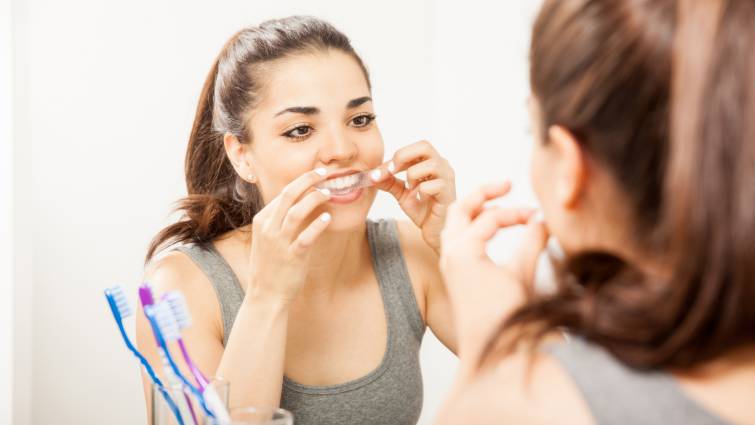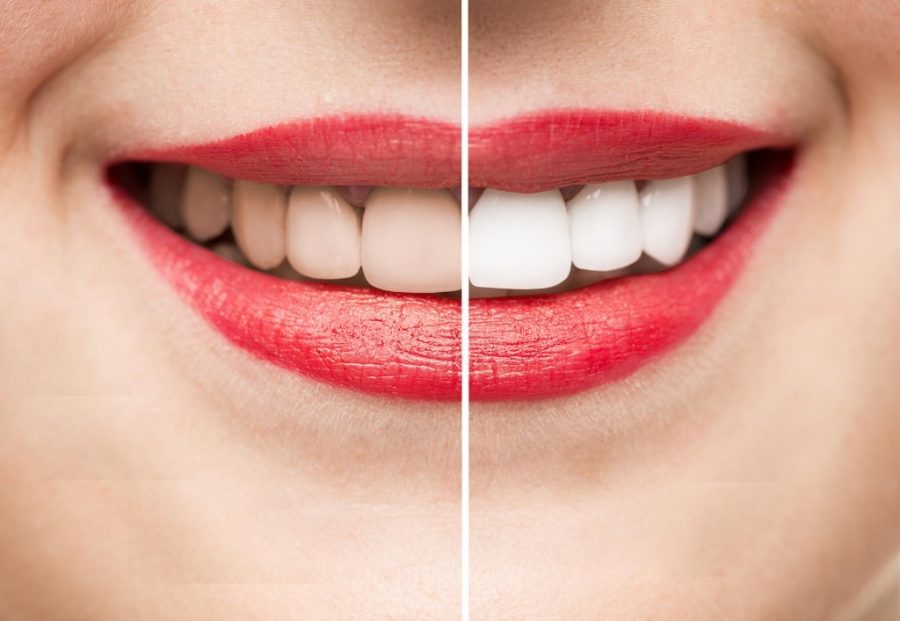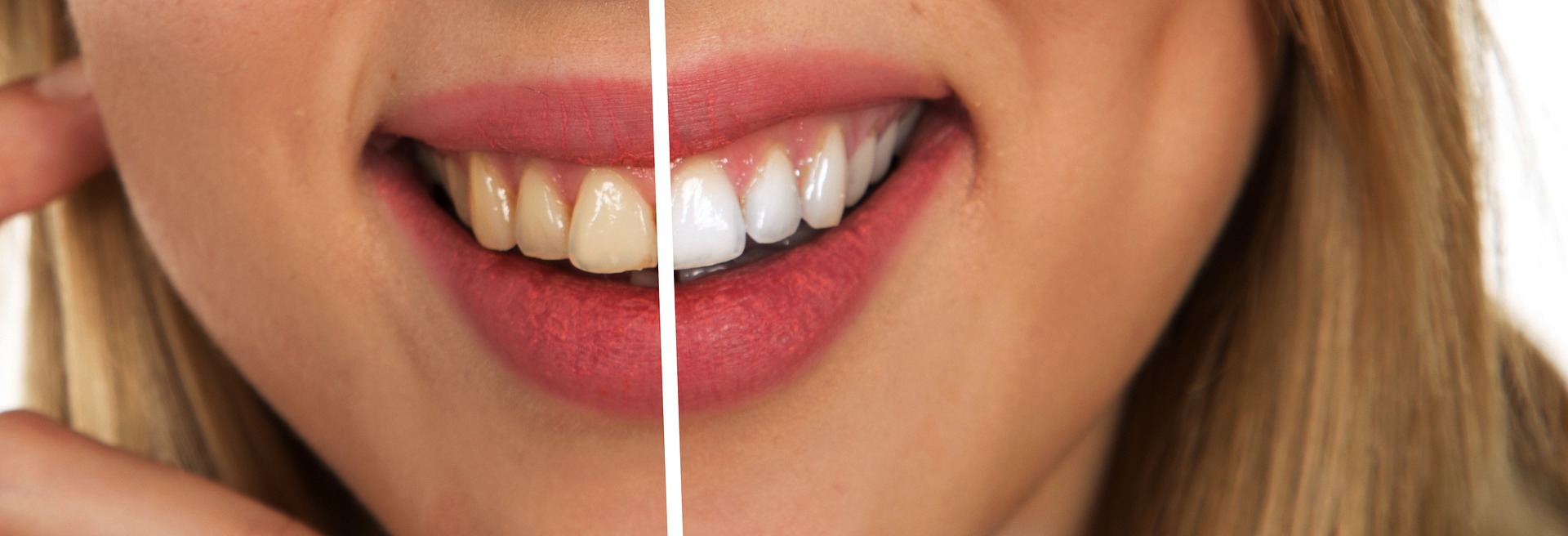Today, we embark on a quest to unravel one of dentistry’s most captivating mysteries: the eternal allure of teeth whitening. Together, we shall explore the intricate nuances of teeth whitening treatments, separating fact from fiction and uncovering the secrets behind that coveted pearly white smile. Within the vast landscape of dental aesthetics, teeth whitening stands tall as a formidable technique for transforming lacklustre grins into beacons of radiance. Is the brilliance bestowed upon us by teeth whitening a fleeting illusion or a permanent testament to our dental prowess? Brace yourself as we embark on this odyssey, navigating the realms of stains, professional expertise, at-home remedies, and the subtle dance between maintenance and longevity. Lets hear what Dentist have to say.
Understanding Teeth Stains
In our quest to understand the mysteries of teeth whitening, let us first delve into the realm of teeth stains. Imagine your teeth as a canvas, susceptible to the brushstrokes of life’s pigmented palette. Stains can be categorized into two main types: extrinsic and intrinsic.
Surface stains on the enamel are extrinsic stains. Coffee, tea, red wine, and cigarettes are common causes of these stains. Poor oral hygiene might also cause external stains. Extrinsic stains are usually easier to eliminate with teeth whitening, producing a brighter, refreshed smile.
Intrinsic stains arise in the dentin, the layer underlying the enamel. These stains are deep-rooted and resistant to tooth whitening. Dental trauma, drugs, high fluoride ingestion during tooth growth, and genetics may cause intrinsic stains. Intrinsic stains may need dental bonding, veneers, or crowns to whiten teeth.

Understanding the nature of teeth stains is crucial in determining the appropriate course of action for effective teeth whitening. A thorough examination by a dental professional, such as myself at Royal Dental Clinics, is essential to accurately diagnose the type and severity of stains and devise a personalized treatment plan that addresses your unique needs.
Now that we have shed light on the different types of teeth stains, let us embark on the next phase of our journey: exploring the world of professional teeth whitening and its impact on the longevity of your dazzling smile.
Professional Teeth Whitening
As we continue our exploration into the realm of teeth whitening, we come across a powerful tool in our quest for a radiant smile: professional teeth whitening. The realm of professional dental treatments offers an array of techniques and procedures that can significantly enhance the brightness of your teeth.
Professional teeth whitening, done by a dentist, uses intense whitening chemicals to create amazing results. In-office whitening involves carefully applying a high-concentration bleaching gel. This gel includes hydrogen peroxide or carbamide peroxide to penetrate the enamel and remove stains.
Professional teeth whitening improves tooth color quickly. You may lighten many shades in one consultation. The technique is safe and customizable to your requirements. Professional tooth whitening is effective but temporary. The kind and intensity of stains, lifestyle habits, and care may affect how long the effects last.


Typically, the effects of professional teeth whitening can last anywhere from several months to a couple of years. However, this timeline is not set in stone and can differ from person to person. Factors such as the consumption of staining substances like coffee or tobacco, oral hygiene practices, and regular dental check-ups can influence the longevity of your whitened smile.
To optimize the durability of your teeth whitening results, it is crucial to follow the guidance provided by your dentist. They may recommend certain lifestyle modifications, such as avoiding stain-causing foods or beverages, quitting tobacco use, and implementing an oral hygiene routine that includes regular brushing and flossing.
Intrinsic Stains and Longevity
Intrinsic stains, which originate from within the tooth structure, are more challenging to treat compared to extrinsic stains. These stains may result from factors such as dental trauma, certain medications, excessive fluoride consumption, or genetic conditions.
Teeth affected by intrinsic stains may require alternative cosmetic treatments like dental bonding, veneers, or crowns. Traditional teeth whitening techniques may have limited effectiveness on intrinsic stains. Achieving a whiter appearance for teeth with intrinsic stains may involve more comprehensive cosmetic procedures.
The longevity of teeth whitening results for intrinsic stains can vary depending on the severity of the stains and the chosen treatment method. Consultation with a qualified dentist is crucial for accurately diagnosing and devising a suitable treatment plan for intrinsic stains.
At-home Teeth Whitening Options
★ At-home whitening options provide convenience for those seeking to brighten their smiles in the comfort of their own homes.
✪ Over-the-counter whitening products, such as whitening toothpaste, strips, or rinses, are readily available without a prescription.
★ At-home whitening kits typically contain lower concentrations of whitening agents compared to professional treatments.
✪ These products can provide noticeable results, but the degree of whitening may be less dramatic compared to professional teeth whitening.
★ The longevity of results from at-home whitening options can vary and is generally shorter compared to professional treatments.
✪ It is important to follow the instructions provided with the at-home whitening products to ensure safe and effective use.
★ For individuals with more severe or stubborn stains, professional teeth whitening may be a more suitable option.
Maintenance and Lifestyle Factors
Oral Hygiene Practices: Maintaining good oral hygiene is vital for preserving the brightness of your smile. Brush your teeth at least twice a day using a whitening toothpaste and a soft-bristled brush. Floss daily to remove plaque and prevent staining between teeth.
Avoid Staining Substances: Certain foods and beverages can stain your teeth over time. Limit your consumption of coffee, tea, red wine, dark sodas, berries, and soy sauce. If you do indulge in these staining substances, rinse your mouth with water afterward or brush your teeth to minimize their impact.
Quit Tobacco Use: Smoking or chewing tobacco not only poses serious health risks but also stains your teeth. Quitting tobacco will not only improve your overall health but also help maintain a brighter smile.
Moderation is Key: While it’s difficult to completely eliminate stain-causing substances, practicing moderation can make a difference. Enjoy your favorite foods and drinks in moderation and try to incorporate them into your meals rather than consuming them throughout the day.
Use a Straw: When drinking beverages that can stain your teeth, consider using a straw. This helps minimize contact between the liquid and your teeth, reducing the risk of staining.
Maintain Regular Dental Check-ups: Regular dental visits are essential for maintaining oral health and preserving your teeth whitening results. Your dentist can perform professional cleanings to remove surface stains and provide guidance on maintaining your bright smile.
Whitening Touch-ups and Follow-ups
Professional Touch-up Treatments: Your dentist may prescribe periodic touch-ups depending on your whitening treatment. In-office treatments use professional-grade whitening chemicals to brighten your smile. Your dentist will evaluate your teeth and recommend a touch-up schedule.
At-Home Whitening Kits: For touch-ups, your dentist may provide at-home whitening kits. These kits contain custom-fitted trays and low-bleaching gel. Your dentist might recommend these kits to keep your teeth white between appointments.
Follow-Up Dental Examinations: Your teeth, gums, and whitening outcomes depend on regular dental checkups. Your dentist will evaluate the color of your teeth, detect any concerns, and provide advice on preserving your brilliant smile.
Customized Recommendations: Its requirements vary. Your dentist will base their suggestions on your lifestyle, tooth color, and whitening procedure. They will tell you how frequently to get touch-ups or utilize at-home whitening solutions.
Lifestyle Adjustments: Lifestyle changes may extend tooth whitening. Avoiding stain-causing foods and drinks, quitting cigarettes, and maintaining proper dental hygiene are examples.
Conclusion
In conclusion, teeth whitening procedures, whether done by a dentist or with over-the-counter items, may dramatically enhance the brilliance of your grin. These therapies may help in the short term, but they are not meant to be long-term fixes. Teeth whitening results might last for months or years, depending on variables including the kind of stain, the person’s oral hygiene routine, and how well they take care of their teeth in general. If you want individualized advice and the finest possible results, it’s important to schedule an appointment with a dentist like myself, Dr. Chirag Chamria of Royal Dental Clinics. Always keep in mind that you are capable of achieving a beautiful smile and maintaining it with proper care.
© All rights reserved by Royal Dental Implants Pvt Ltd
Issued in public interest






